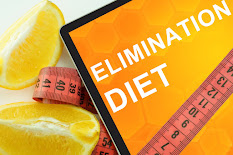Dietitians’
participation on the healthcare team is enhanced if we can accurately describe
the problem(s) we are addressing. Refeeding
syndrome may present an opportunity for dietitians.
Refeeding
syndrome is a documented problem encountered during certain situations when a
severely malnourished person starts receiving significant energy from oral,
enteral or parenteral nutrition support.
It
was first named when parenteral nutrition was emerging as a nutrition
intervention and malnourished patients received excessive calories, mostly from
dextrose.1 There continues to be lack of clear and
consistent definition of refeeding syndrome, however key risk factors are known
and include those who are malnourished, have a very low BMI or who have received
negligible nutrient intake over the last 5 days. 2
The
rapid start of metabolism of carbohydrate increases the need for intracellular
thiamin and electrolytes (e.g. phosphate, magnesium and potassium). When
these nutrients rapidly enter the cells, the result is a decrease in serum levels.
In addition, alterations in insulin levels can lead to significant sodium and
fluid retention. These metabolic disruptions or are known as 'refeeding
syndrome".
But
is there one "best" way to create a PES statement that leads to
appropriate intervention?
If
you look at the guidelines for refeeding malnourished patients you will find
that recommendations include screening, assessment/monitoring and evaluation of
the following types of data:
-NICE
guidelines identify that SNAQ may be used as a screening tool to identify those
at risk for refeeding syndrome3
-Nutrition
Assessment/Monitoring and Evaluation parameters used prior to
initiating feeding and monitoring after initiation of feeding
Aspen Guidelines include criteria for identifying moderate
or significant risk for refeeding syndrome using a combination of BMI, amount
and rate of weight loss, caloric intake, potassium, phosphorus, or
magnesium serum concentrations (hypokalemia, hypophosphatemia, or hypomagnesemia), loss of subcutaneous fat, loss of muscle mass, and
presence of higher risk co-morbidities.2
-Nutrition
interventions include supplementation of thiamin and electrolytes (phosphate,
potassium and magnesium if levels are low) prior to the start of nutrition
therapy followed by a gradual increase in energy intake to meet energy requirements by
Day 2 to 4 as long as electrolyte levels are stable.
What
are the appropriate PES statements?7
If
you are using criteria to identify individuals "at risk" for
refeeding syndrome prior to initiating feeding, then a dietitian may consider using
these two PES statements:
·
Starvation related malnutrition, severe, related to
prolonged nutrition inadequacies as evidenced by unintentional weight loss (adults- of >20%
in 1 year; >10% in 6 months; >7.5% in 3 months; or >5% in 1 month), severe loss of subcutaneous fat stores, and severe
muscle loss4
·
Predicted Inadequate Nutrient Intake (thiamine,
phosphorus, potassium and magnesium) related to increased nutrient need during
initiation of refeeding after severe malnutrition as evidenced by diagnosis of
severe malnutrition, pre-feeding laboratory values for phosphorus, potassium and magnesium (as applicable) and plan to initiate refeeding to estimated requirements by
Day 2.5
However
if it is now Day 2 and there are documented electrolyte imbalances, then the
dietitian may consider the following that reflect the actual presence of
refeeding syndrome:
·
Starvation related malnutrition (severe), related to
prolonged nutrition inadequacies as evidenced by unintentional weight loss (adults- of >20% in 1 year; >10% in 6
months; >7.5% in 3 months; or >5% in 1 month),
severe loss of subcutaneous fat stores, and severe muscle loss4
·
Imbalance of nutrients related to increased need for
electrolytes and thiamine during refeeding as evidenced by (hypokalemia
(data), hypophosphatemia(data), and/or hypomagnesemia
(data) with TPN currently contributing 75% of estimated energy needs. 6
It
is important to remember there may be alterations in electrolytes from other
causes, so the dietitians' clinical judgement is necessary to determine whether
the evidence is present that reflects a true refeeding syndrome versus an
"Altered nutrition related laboratory values.” 8
There
may be situations where an "Altered nutrition-related laboratory value"
may be identified first and as the clinical picture becomes more clear, this
may be elevated to “imbalance of nutrients” that reflects refeeding
syndrome. 6-8
BOTTOM LINE:
Since refeeding syndrome is associated with SEVERE
malnutrition, the clinical picture being represented will usually include the
severe malnutrition nutrition diagnoses in addition to an "imbalance of
nutrients" if refeeding syndrome has occurred, or "predicted inadequate intake" where it is determined that patient is at risk for
developing refeeding syndrome.
Acknowledgements: A
special thank you to Ainsley Malone, MS, RDN, LD, CNSC, FAND, FASPEN and Sandra Capra, BSc(Hons),
DipNutr&Diet, MSocSc, PhD, for providing input to concepts included in
this blog.
References:
1.
Weinsier RL, Krumdieck CL.
Death resulting from overzealous total parenteral nutrition: the refeeding syndrome revisited. Am J Clin Nutr. 1980; 34: 393-399 https://doi.org/10.1016/j.jpeds.2020.01.042
2.
da Silva, JWV et
al. ASPEN Consensus Recommendations for Refeeding
Syndrome. Nutrition in Clinical Practice. 35(2); 2020
178–195 DOI: 10.1002/ncp.10474
3.
Nutrition support in
adults: Evidence update August
2013. National Institute for Health and
Care Excellence (NICE). Available
at: https://www.nice.org.uk/guidance/cg32/evidence/evidence-update-pdf-194887261. Accessed December 4, 2020.
4.
Academy
of Nutrition and Dietetics. Nutrition Terminology Reference Manual (eNCPT):
Dietetics Language for Nutrition Care. Starvation Related Malnutrition (undernutrition)
(NC-4.1.1). Reference Sheet. Available at: https://www.ncpro.org/pubs/encpt-en/codeNC-4-1-1 Accessed November 22, 2020.
5.
Academy
of Nutrition and Dietetics. Nutrition Terminology Reference Manual (eNCPT):
Dietetics Language for Nutrition Care. Predicted Inadequate Nutrient Intake (Specify)
(NI-5.11.1). Reference Sheet. Available at https://www.ncpro.org/pubs/encpt-en/codeNI-5-11-1 Accessed November 22, 2020
6.
Academy
of Nutrition and Dietetics. Nutrition Terminology Reference Manual (eNCPT):
Dietetics Language for Nutrition Care. Imbalance of Nutrients (NI-5.4).
Reference Sheet. Available at https://www.ncpro.org/pubs/encpt-en/codeNI-5-4 Accessed
November 22, 2020
7.
Matthews,KL, Palmer, MA,
Capra SM. The accuracy and consistency of nutrition care process
terminology use in cases of refeeding syndrome. Nutrition and Dietetics
2018: 75 p 331-336. DOI:
10.1111/1747-0080.12389
8. Academy of Nutrition and
Dietetics. Nutrition Terminology Reference Manual (eNCPT): Dietetics Language
for Nutrition Care. Altered
Nutrition Related Laboratory Values (Nc-2-2). Reference Sheet. Available
at https://www.ncpro.org/pubs/encpt-en/codeNC-2-2, Accessed
November 22, 2020






